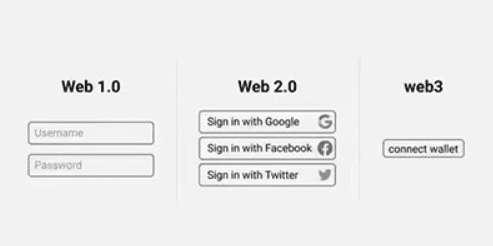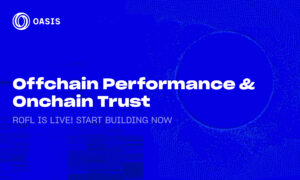Recently, there is a comparative chart of the development of Web 1.0 to Web 3.0, which has been flooded with social network platforms such as Twitter and Telegram. It also makes many people start to think about what the future world will be like in the Internet era!
In the Web 2.0 world, your every footprint on the Internet is in the hands of different companies. Each company has only one piece of the information on what you do on the Internet. The bigger the company is, the more business it is involved in, the greater the piece they have, but it doesn’t piece together the whole picture.
On the blockchain, the full picture of an address is hidden in every chain interaction you make. Any individual or organization can put together an image of you without permission, like RSS3/Project Galaxy/CyberConnect, they organize and present on-chain images and behavior of users in different ways.
There are billions of dollars in token transactions and hundreds of millions of dollars of NFT transactions on the chain every day, and the information is publicly available, so it’s not hard to imagine how much Alpha can be mined.
The value of the gold mine of data on the chain has been reflected incisively and vividly, and in the future, we will see the CreditScore based on the data on-chain. the broad application of decentralized identity in the metaverse and data products that capture a certain angle like nansen to bring value to users.
In Web 3. 0, the data on-chain that belongs to everyone is readable to every person or organization and can be captured by everyone. The way value is distributed is being reshaped. In the foreseeable future, when you use any application in Web 3.0, instead of starting from scratch, you walk through every app with your address profile and tag. The carrier of value is your data, and it belongs to you.
DCFS takes “computing power as the core, application as the driving force” as its core idea, focusing on promoting the application of emerging technologies and technological innovation, and the application level and computing capacity will be coordinated development, to form a close interacting loop of computing capacity, application level, and economic growth.
DCFS high-performance computing nodes can provide high-performance computing power services for many industries, including data preparation, data processing, AI model training and model reasoning, face recognition, graphics rendering, blockchain zero-knowledge computing, etc. High-performance computing nodes in DCFS can be composed of a variety of shapes, including large GPU, NPU, FPGA server cluster running full function node (permanent node), small and medium-sized enterprises idle spare GPU/CPU server computing node and individual idle GCPU/PC computing node.
DCFS classifies computer resources in terms of computing power and connects them loosely to a particular platform. At the same time, it utilizes blockchain technology to ensure the reliability of data, to solve the problem of scheduling small and medium-sized computing resources in the whole network in the Web 3.0 era.



































